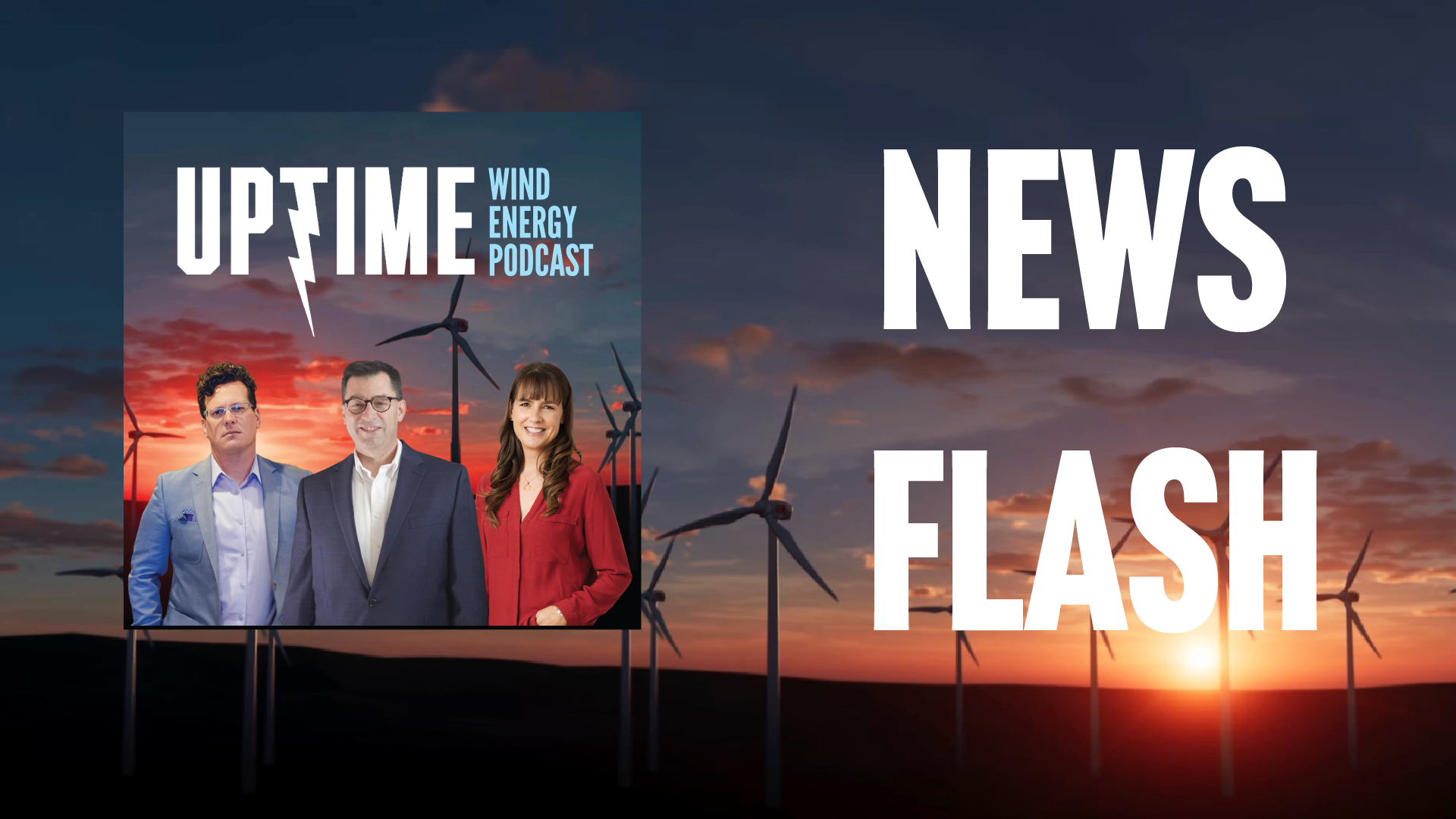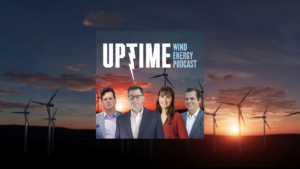Podcast: Play in new window | Download
We discuss major investments in offshore wind projects in the UK and Brazil by Marubeni and TotalEnergies, highlighting the opportunities in these growing markets. Then we shift to how Berkshire Hathaway Energy has leveraged tax credits to achieve negative income tax rates, underscoring the financial incentives driving renewable energy development. Key takeaways are the attractiveness of offshore wind and how tax policy is fueling clean energy growth.
Sign up now for Uptime Tech News, our weekly email update on all things wind technology. This episode is sponsored by Weather Guard Lightning Tech. Learn more about Weather Guard’s StrikeTape Wind Turbine LPS retrofit. Follow the show on Facebook, YouTube, Twitter, Linkedin and visit Weather Guard on the web. And subscribe to Rosemary Barnes’ YouTube channel here. Have a question we can answer on the show? Email us!
Pardalote Consulting – https://www.pardaloteconsulting.com
Weather Guard Lightning Tech – www.weatherguardwind.com
Intelstor – https://www.intelstor.com
Allen Hall: I’m Allen Hall, president of Weather Guard Lightning Tech. And I’m here with the founder and CEO of InterStor, Phil Totaro, and the chief commercial officer of Weather Guard Lightning Tech, Joel Saxum. And this is your News Flash. News Flash is brought to you by our friends at InterStor. If you need actionable information about renewable projects or technologies, check out InterStor at InterStor. com.
Japan’s Marubeni Corp and its partners have pledged to invest 10 billion pounds, about 12 billion U. S. dollars over the next decade in clean energy in the United Kingdom. Among the planned investments, the 3. 6 gigawatt ASEAN Floating Offshore Wind Farm in Scotland will be the largest project. Marubeni which plans to invest around 1 billion pounds of its own, expects various support from the UK government, including helping with the ASEAN Offshore Wind Project.
Japan and the UK are really aggressively seeking renewable energy, particularly offshore wind at the moment, Phil. This seems like a good combination between the two, and ten billion pounds is a lot of money.
Philip Totaro: It is, Allen, and it’s great to see but what’s interesting about it is a couple of things.
First is, most of this money is earmarked for project development. And most of it for offshore and floating offshore in particular. And I think one of the reasons why they want to do this, Marubeni wants to be able to get a lot of lessons learned on offshore, floating offshore investments in the UK, where they’re obviously ramping up and rolling these projects out.
They want that knowledge base and that experience when they start doing some more of these deep water projects in Japan. Which they’re still getting their pardon the pun, but they’re still getting their feet wet with. So they’re… They’re leveraging this investment as something that will also benefit not only the UK with the cash, but Japan from the experience.
Allen Hall: Brazil’s energy minister announced last week that France’s TotalEnergies is investing almost 100 billion in boosting its presence in Brazil, including offshore wind projects. According to the announcement, the money will be used in the areas of oil and gas research and exploration, as well as offshore and onshore wind.
Plus some solar projects. Again, a hundred billion dollars is a lot of money to be pumping into Brazil. I guess TotalEnergies sees a really bright future below the equator.
Joel Saxum: Smart money spent, because if you’ve got someone that’s coming in that’s willing to they’re looking at offshore oil and gas research and exploration as well as offshore and onshore wind.
If they’re smart, offshore wind and oil and gas research and exploration can be co located and co spent. Because every one of those needs site characterization, they need seismic studies, they need near surface studies, they need all kinds of stuff that has a vessel in country doing a lot of work, or multiple vessels in country doing a lot of work, and if you can mobilize them once, and you can use them for the same kind of services, it’s all value add, right?
It’s time spent on the water can be used for a lot of different things, so it’s a good way to spend a large block of money, if you’re going to spend it.
Philip Totaro: They announced a few weeks ago that they were going to have a partnership with Petrobras, the national oil company in Brazil including specifically for collaboration on offshore oil and gas and offshore wind.
While it might seem like this is a lot of money and you might think, oh most of it’s going to go to oil and gas, this could actually unlock quite a bit in an offshore wind. And onshore wind as well, because if they’re serious about that, there are definitely projects in Brazil where a cash infusion would be more than welcomed.
Allen Hall: Does this shift the balance of power below the equator on development?
Philip Totaro: Good question. Potentially it, it does. Again, it depends on specifically where and how they spend their money, but keep in mind, you’ve got a number of major European utilities or companies like voltalia, Statkraft. Yeah other companies that have already come into Brazil and are starting to gobble up projects. This move by TotalEnergies is potentially reading the room, if you will and seeing that there’s a lot of money already pouring into Brazil, and it’s a growing market. They’ve already got more than 23 gigawatts of onshore wind. I forget particularly how much they have in, in solar at this point.
But they’ve got the second biggest offshore wind pipeline of projects now in the world second only to China. I think it’s something like 193 gigawatts proposed. At this point, so I mean it’s a big, it’s a big market opportunity.
Joel Saxum: Yeah, and if you’re going to come into a country, specifically if you’re going to come into Brazil and you want to be lockstep with one organization to develop anything offshore or onshore, it’s Petrobras.
So great move by TotalEnergies.
Allen Hall: Warren Buffett’s Berkshire Hathaway Energy Division has had a negative income tax rate for five straight years. Boy, I wish I had that. The division gets substantial tax credits for producing wind and other renewable power. It has received nearly 6 billion in tax benefits over the last three years alone.
The credits are for wind power generation from Berkshire’s regulated utilities and energy companies, similar to MidAmerican in Iowa. The negative tax rates range from minus 18 percent to minus 52 percent in recent years, thanks to the credits. Phil there’s a lot of money to be had in wind if you have a good tax attorney.
Philip Totaro: About 3. 8 billion worth of production tax credit revenue that they had already achieved up through the end of 2021. We’re actually just analyzing how much money they got from 2022 because the Energy Information Administration in the United States just released what’s called the EIA 923, which is plant level production data from all.
Across the entire electricity spectrum. So all power generators have to report their annual energy production to the government and that data has just come out. So we’re able to dive in and take a look. Again, 3. 8 billion in PTC revenue generated already presumably another 3 to 400 million probably.
Just from last year alone, and keep in mind that the PTC credit is now 26 a megawatt hour which may even be higher than some of the rates that they, some of the offtake rates that they have between their their generation company, their IPP company and their utility company which those power purchase contract prices aren’t always made public.
But, in the Midwest, a lot of times you get a pretty cheap you get a pretty cheap rate. So this, the contribution that they’ve had from the production tax credit is huge. It’s also driven a substantial portion of the repowering that they’ve done because they want to be able to requalify projects that are at least 10 years old for this PTC. And they want to get a lot of that done this year because they’ll be able to requalify for it again if they repower the same project sites again in another 10 years under the same PTC regime that’s going to be in place until 2033. So they’ve been very clever second only to NextEra in terms of taking advantage of the production tax credit.
Joel Saxum: Another thing for technicians and site level people to watch out for in the wind industry is you’ll see a lot of Berkshire Hathaway Energy acquisitions. They’re buying, in the last few years, buying up little groups of companies here and wind projects here and there. So a lot of people have probably seen their emails change or emails of their suppliers change.
And I would watch for Warren Buffett and team to keep executing on these projects.










